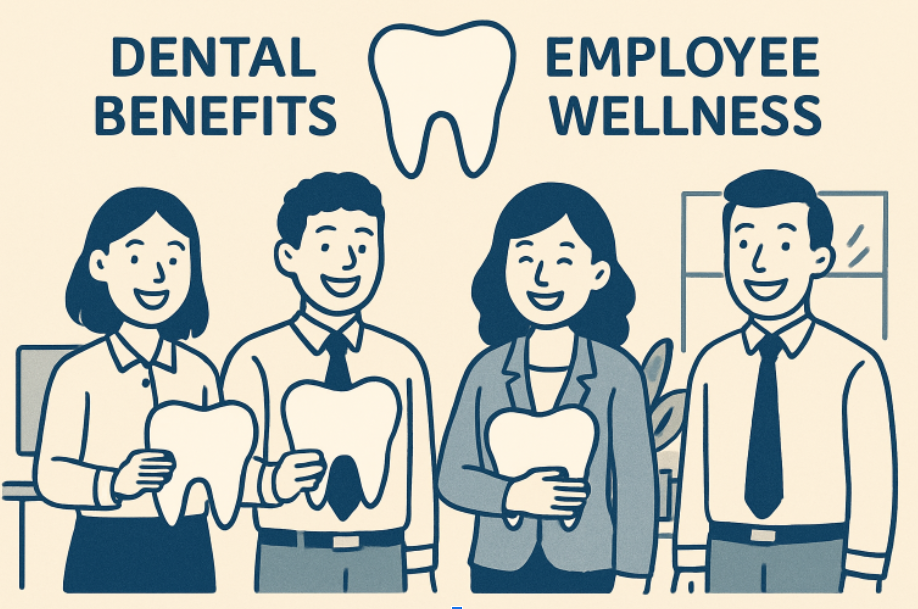How Dental Insurance Choices Shape Employee Wellness
The Link Between Oral Health and Overall Well-being
Dental insurance often stands out as an invaluable benefit when considering the many ways employers can invest in workforce health. Good oral health is more than just a bright smile—it is tightly linked with overall well-being. Poor dental hygiene can contribute to severe health conditions like cardiovascular disease, diabetes, and even stroke. This is why regular dental care should be seen as a cornerstone of a holistic wellness strategy in any workplace, ensuring that employees are healthy and performing at their best.
When employers provide strong dental coverage, they equip their teams to address oral health concerns early through timely detection and intervention. This proactive approach reduces workplace absences while fostering a healthier, more engaged, and productive workforce. For organizations looking to evaluate and select the best insurance solutions, exploring Delta Dental’s employer plan comparison at https://www1.deltadentalins.com/employers/compare-plans.html offers a practical starting point to understand the range of available options better and find the right fit.
Beyond physical health, the accessibility of dental care directly impacts mental health and confidence. Persistent tooth pain or oral health worries can increase stress and negatively influence job performance. Thus, integrating comprehensive dental benefits into employer offerings isn’t merely a perk—it’s a direct investment in employees’ broader well-being.
Research shows that workplace wellness and benefits packages are significant factors in job satisfaction. Benefits perceived as comprehensive and relevant can make employees feel more valued, resulting in greater workplace loyalty. This is especially relevant as today’s workers expect health benefits to extend beyond traditional medical coverage and to address their diverse needs, including dental care.
Impact on Employee Productivity and Retention
There is a direct correlation between dental insurance and employee productivity. Employees with dental coverage are more likely to attend preventive checkups, reducing the risk of dental emergencies that could cause absenteeism. According to MetLife’s 2025 Employee Benefit Trends Study, 75% of employees with dental insurance report higher productivity at work, 9% higher than those without coverage. Employers who provide quality dental benefits see not only improved individual well-being but enhanced organizational performance overall.
Dental benefits also influence retention. When employees feel supported in their health, they’re more inclined to stay with their current employer. The same MetLife study notes that workers with employer-provided dental coverage are 17% more likely to remain with that organization over the next year than those without dental benefits. Given the high costs associated with recruitment and training, improving retention through better benefits makes solid business sense. For further reading on the positive relationship between workplace health benefits and retention, see the Society for Human Resource Management (SHRM) analysis.
See also: Technology in 2025: Trends That Are Shaping the Future
Financial Benefits of Preventive Dental Care
Preventive dental care reduces the likelihood of more complicated—and expensive—medical interventions down the line. Employees who receive regular dental check-ups are less likely to develop severe oral health issues, resulting in fewer claims and lower healthcare spending for employers and staff. According to the American Dental Association, preventive treatments can catch potential problems early, minimizing the need for costly emergency procedures and reducing overall expenditure on employee healthcare in the long run.
Additionally, a culture that encourages preventive care helps employees see the value of their benefits, further contributing to morale and a sense of support in the workplace. This strategic focus on prevention moves companies from reactive healthcare models toward more sustainable—and less expensive—preventive approaches.
Addressing Dental Anxiety to Improve Utilization
Dental anxiety remains a significant obstacle to utilization, with roughly three out of every four adults reporting hesitancy or fear about dental visits. The good news is the dental industry is actively responding: offices are being redesigned for comfort, staff are trained in patient care techniques, and digital teledentistry options are becoming more widely available. Employers can directly support these trends by offering dental plans that include virtual visits, lowering barriers, and helping more people maintain regular care schedules.
These efforts also demonstrate that an organization is attuned to employees’ psychological barriers—not just their physical or financial needs. As a result, more employees feel empowered to take charge of their oral health, leading to better health outcomes companywide. For context on the prevalence and impact of dental anxiety, see CDC’s Oral Health Fast Facts.
Integrating Dental Benefits into Wellness Programs
Integration of dental insurance into wider wellness programs creates even more value. For example, some insurers, such as Humana, offer dental plans with medical and general wellness programs, providing no-cost preventive care and rewards for employees who engage in healthy behaviors. Such programs encourage regular dental visits, reducing long-term health risks and increasing the perceived value of workplace benefits.
This integrated approach helps employers foster a culture of proactive health management, uniting dental, medical, and preventive initiatives under a single wellness umbrella. The more seamless and interconnected these offerings are, the more likely employees will participate, generating a virtuous cycle of health and productivity.
Choosing the Right Dental Plan for Your Workforce
Every workforce is unique, so employers must consider flexibility when choosing dental plans. Providing multiple dental insurance options allows employees to select the coverage that best fits their family and financial needs—similar to how medical insurance plans are structured. This strategy acknowledges individuals’ differing needs based on age, family composition, and specific oral health concerns.
Offering planned choices that balance cost and coverage enables higher plan utilization, better health outcomes, and higher employee satisfaction. Companies should periodically review their benefit offerings to ensure they remain competitive and relevant in an ever-evolving labor market.
Conclusion
Investing in comprehensive dental insurance is not just about oral care: it’s a smart business move that strengthens employee well-being, raises productivity, and cuts healthcare costs. Dental coverage is essential in fostering a resilient, satisfied, and loyal workforce. Employers who embrace robust dental benefits as a core part of their overall strategy are ultimately building a stronger foundation for organizational health and success.
